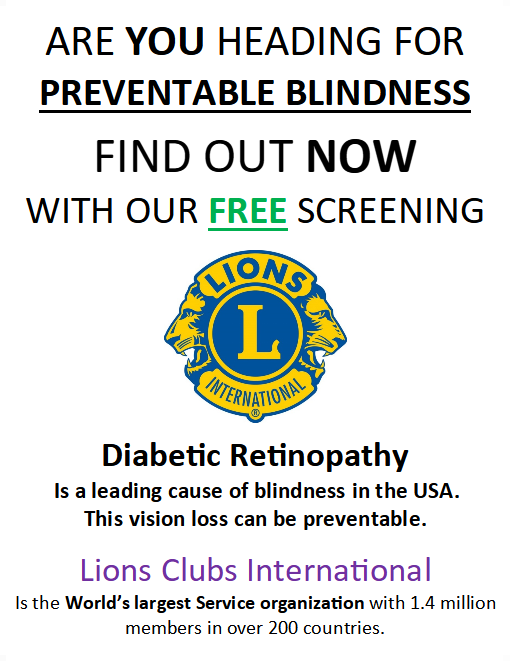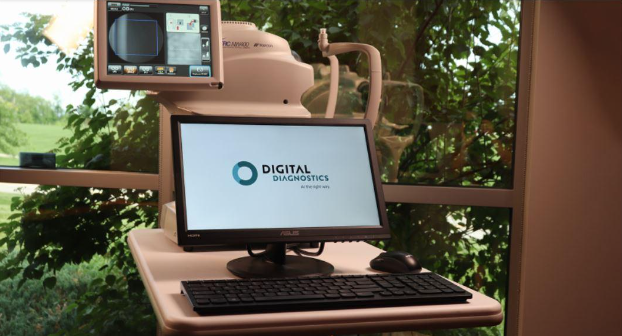
Annual Eye Exams including screening for Diabetic Retinopathy by Eye Care Professionals are Important.

In April 2018, Digital Diagnostics became the first company
to ever receive FDA clearance for an AI diagnostic platform
that makes a diagnosis without physician input at the point-of-care.
This achievement did not happen overnight – it was the
culmination of decades of research by founder
Dr. Michael Abramoff
on automated image analysis, combined with decades of
research on how clinicians diagnose disease.
Working With – Not Against – the Healthcare System
Since then, Digital Diagnostics has diligently worked from
within the healthcare system to establish automated
diagnosis as the new standard of care. From real-world
clinic launch & EMR integration, to the creation of the
first ever autonomous AI CPT® category 1 code for billing
and payment, to inclusion in the American Diabetes Association
(ADA)’s 2020 Standards of Care in Diabetes, Digital Diagnostics
has proven that intelligent diagnostic platforms can be
deployed safely and responsibly to improve patient outcomes
and increase healthcare productivity.
Digital Diagnostics’ first FDA-cleared product is the AI diagnostic
platform Dr. Abramoff had envisioned years earlier. The platform,
called LumineticsCore™ (formerly IDx-DR), detects diabetic
retinopathy (including macular edema) at the point-of-care. After
completing a rigorous prospective, preregistered clinical trial at
primary care sites across the country, LumineticsCore became the
first FDA-cleared AI diagnostic system to make a diagnosis without
physician input at the point-of-care.
Digital Diagnostics
is in use at over 20 health systems
and our AI Cameras have tested thousands of patients and
identified hundreds of patients with disease who were
previously undiagnosed.
Diabetic Retinopathy
Diabetes is a disease that affects blood vessels throughout
the body, particularly vessels in the kidneys and eyes. When
the blood vessels in the eyes are affected, this is called
diabetic retinopathy.
The retina is in the back of the eye. It detects visual
images and transmits them to the brain. Major blood vessels
lie on the front portion of the retina. When these blood
vessels are damaged due to diabetes, they may leak fluid
or blood and grow scar tissue. This leakage affects the
ability of the retina to detect and transmit images.
During the early stages of diabetic retinopathy, reading
vision is typically not affected. However, when retinopathy
becomes advanced, new blood vessels grow in the retina. These
new vessels are the body’s attempt to overcome and replace
the vessels that have been damaged by diabetes. However, these
new vessels are not normal. They may bleed and cause the vision
to become hazy, occasionally resulting in a complete loss of
vision. The growth of abnormal blood vessels on the iris of the
eye can lead to
glaucoma
.
Diabetic retinopathy can also cause
your body to form
cataracts
.
The new vessels also may damage the retina by forming scar tissue and pulling the retina away from its proper location. This is called retinal detachment and can lead to blindness if left untreated.
Symptoms of diabetic retinopathy:
- There are usually no symptoms in the early stages of diabetic retinopathy
- Floaters
- Difficulty reading or doing close work
- Double vision
- If left untreated, severe vision loss can occur
Causes of diabetic retinopathy:
- Diabetes: Everyone who has diabetes is at risk for developing
diabetic retinopathy, but not everyone develops it. Changes in
blood sugar levels increase the risk. Generally, diabetics don’t
develop diabetic retinopathy until they’ve had diabetes for at
least 10 years.
Reduce your risk of developing diabetic retinopathy by:
- keeping your blood sugar under control.
- monitoring your blood pressure.
- maintaining a healthy diet.
- exercising regularly.
- getting an eye exam at least once a year.
Diagnosing diabetic retinopathy:
There are usually no symptoms in the early stages of diabetic retinopathy. Vision may not change until the disease becomes severe. An exam is often the only way to diagnose changes in the vessels of your eyes. This is why regular examinations for people with diabetes are extremely important.
Your eye doctor may perform a test called fluorescein angiography. During the test, a harmless orange-red dye called Fluorescein will be injected into a vein in your arm. The dye will travel through your body to the blood vessels in your retina. Your doctor will use a special camera with a green filter to flash a blue light into your eye and take multiple photographs. The pictures will be analyzed to identify any damage to the lining of the retina or atypical new blood vessels.
Some of the treatment for diabetic retinopathy:
Diabetic retinopathy does not usually impair sight until
the development of long-term complications, including
proliferative retinopathy (when abnormal new blood vessels
bleed into the eye). When this advanced stage of retinopathy
occurs,
pan-retinal photocoagulation
is performed.
During this procedure, a laser is used to destroy all
of the dead areas of retina where blood vessels have
been closed. When these areas are treated with the
laser, the retina stops manufacturing new blood vessels,
and those that are already present tend to decrease or
disappear.
If diabetic retinopathy has caused your body to form
cataracts,
they can be corrected with
cataract surgery.
Vision loss due to Diabetic Retinopathy can be prevented.
Lions - Some of what we do and how someone can help.

